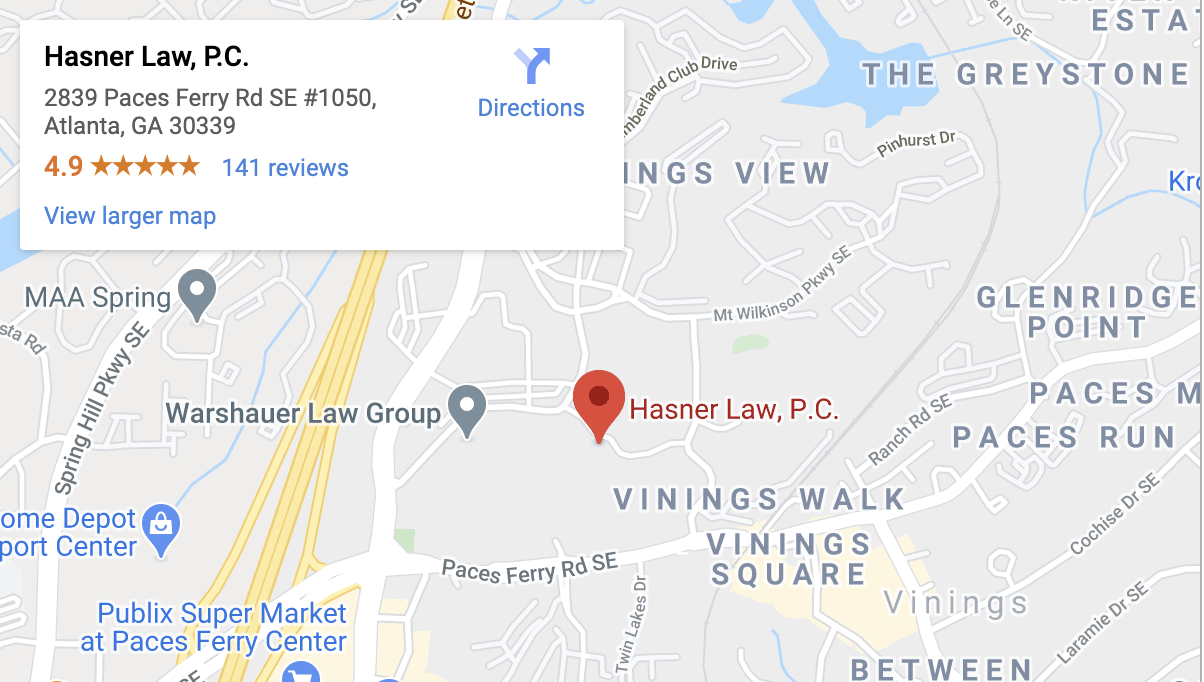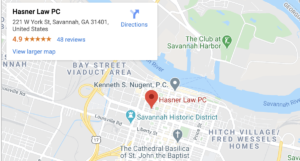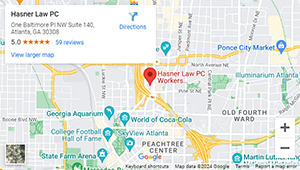Understanding Causation in Personal Injury Cases
In Georgia, victims in personal injury cases must prove four elements to win a negligence case.
Personal injury victims must show:
- The defendant owed them a duty of care
- The defendant breached their duty
- The breach caused their injuries
- They experienced damages
Understanding causation and how it works is helpful for anyone dealing with a personal injury case.
The third element, known as “causation,” is the most complicated element to prove. The victim must show that the defendant, and not some other cause, led to their injuries and damages.
What is Causation?

Causation can have multiple layers depending on the facts of a case and how many people were involved. It’s one of the crucial elements in a personal injury claim. To recover compensation, the victim must show that the defendant’s actions (or inactions) caused their damages.
The law breaks causation into two categories, “actual cause” and “proximate cause.”
Defining Actual Cause
Cause in fact, also known as the “actual cause,” is the easier concept to demonstrate. A personal injury victim proves actual cause by demonstrating they would not have been injured but for the defendant’s actions. In other words, the defendant’s breach of duty was essential in producing the plaintiff’s injury.
Defining Proximate Cause
Proximate cause, or the legal cause, is more complicated. It’s not always clear what started the chain of events that led to the incident. Legal cause is judged by whether the plaintiff’s injuries were foreseeable.
However, proximate cause has its limits. Proximate cause is concerned with fairness. It seeks to limit the chain of causation to actions and events that were foreseeably related to a plaintiff’s injuries.
In other words, if the connection between the defendant’s actions and the plaintiff’s injuries is too remote, the defendant may not be the proximate cause of the plaintiff’s damages.
How to Determine Causation
Causation is often the most challenging element to prove. The plaintiff bears the burden of proof and must demonstrate that the defendant caused the injuries. It’s up to the court to decide if the plaintiff proved causation and assess the impact of all direct or indirect events.
The “But For” Test
Many states use the “but for” test to determine causation. The “but for” test asks a simple question: would the accident have happened but for the defendant’s action?
While the question is simple, the answer usually isn’t as straightforward. Several factors could have an impact on an incident, including the victim’s actions. However, if the court determines that the damages would not have occurred without the defendant’s actions, the plaintiff has proven causation.
For example, say Billy was driving on the road. He speeds through a red light and hits Joe’s car from behind. Joe sustained whiplash from the accident.
Billy had a duty to other drivers to drive reasonably and obey traffic laws. Billy breached that duty by running the red light. Joe would not have suffered his injury and damages but for Billy running the red light.
So, Billy is the actual cause of Joe’s whiplash injuries.
The Proximate Cause Test
That proximate cause test looks at the facts of the case and considers the impact the defendant’s actions had on the outcome. If the defendant’s actions were foreseeable and relate closely enough to the accident, most courts will find the plaintiff met the burden of proof for causation.
Consider the case of Billy running a red light, hitting Joe’s car, and then causing Joe whiplash. A car accident and resulting injuries were a foreseeable consequence of Billy’s running a red light. Therefore, Billy’s breach of his duty to drive carefully was the proximate cause of Joe’s whiplash injuries.
But remember, proximate cause is concerned with whether a person’s actions foreseeably caused injuries to another. If a defendant’s actions were too remote or disconnected from a plaintiff’s injuries, they were not the proximate cause of the injuries. Thus, the defendant cannot be held legally responsible for the plaintiff’s damages.
For example, say a local police officer stopped Billy the day before his accident with Joe. Billy did not have proof of insurance, but the police officer let him go without impounding his car. Technically, “but for” the police officer’s failure to seize the car, Billy would not have run the red light the next day, causing Joe’s injuries.
Although the police officer’s failure to impound might meet the definition of “actual cause,” Joe’s injuries were not a foreseeable result of the police officer’s actions. In other words, it would not be fair to hold the police officer liable. The connection between the police officer’s act and Billy’s crash and Joe’s injuries is too remote to trigger proximate cause.
So, the police officer’s actions would not be the legal cause of Joe’s injuries.
Contact an Atlanta Personal Injury Attorney for More Information
Causation can be a tricky concept, especially when considering contributing factors. It may be in your best interest to retain experienced legal counsel to help you through the process. Personal injury attorneys can help you navigate the technical issues and identify expert witnesses to assist in your case.






